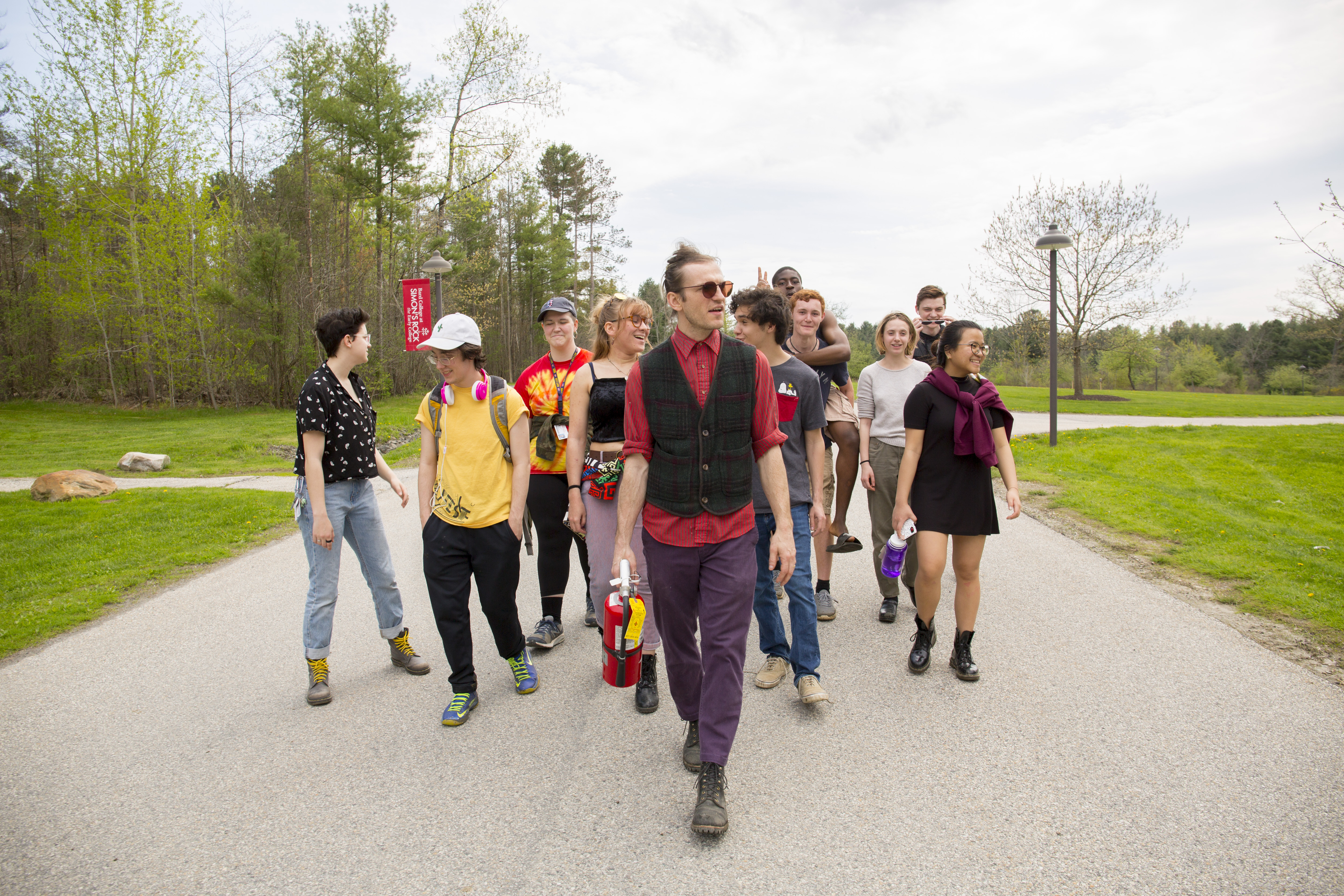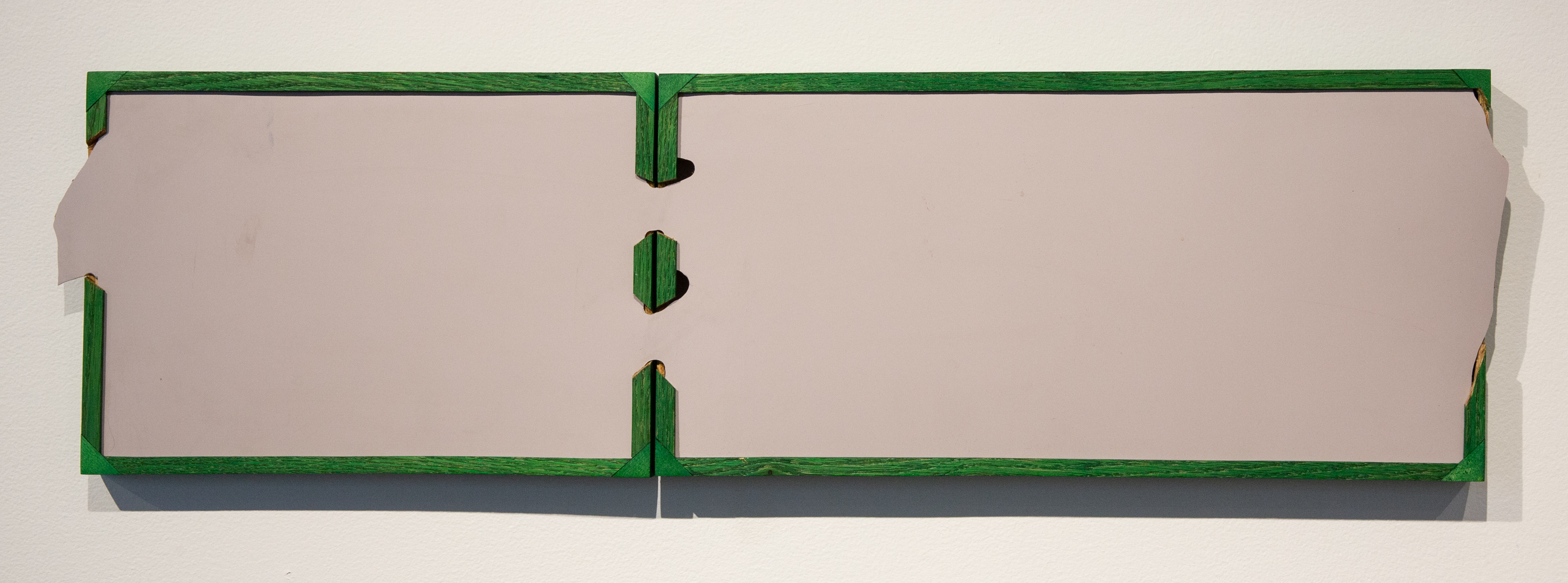What Makes an Artist? Simon’s Rock Students Decide
What is art? What makes an artist? Chris Domenick, faculty in the arts, asks students to interrogate these questions and come up with unexpected answers as part of his Interdisciplinary Guest Artists Class this spring.
The class brings six avant-garde artists to Simon’s Rock to give virtual lectures, discuss their work, and demonstrate how art manifests differently in the eyes of its creator and its beholder. The virtual lectures, which run from February to May, are open to both students and the broader Simons Rock community. Participating artists include Neil Goldberg, Adelita Husni-Bey, Lex Brown, Guadalupe Maravilla, Jibade-Khalil Huffman, and Sahra Motalebi.

Chris Domenick, an interdisciplinary artist who works at the intersection of sculpture and printmaking, with a class in 2019.
Each guest artist was specifically selected because they embody the type of boundary-defying ethos that Chris aims to convey through the class—that artistic practice often integrates and relies on different types of thinking and inspiration. “[These artists] are people that work across disciplines—that shape-shift,” said Chris. “They are able to things like have a podcast, do a photo project, make a sculpture, make a performance. They don’t feel tethered to one thing as the only way to understand their practice.”

“Diptych (Barnaby)” by Chris Domenick, on display in the “Faculty Make Art” exhibit.
This helps “contextualizes their practice within a broader historical or conceptual framework,” noted Chris, and helps orient the students around the artists’ practice before they meet them. The students also read critiques of the artists’ work, and at the end of the semester will create a piece of writing to reflect on their experience of the artists.
An important aspect of the class is the ability for students to directly engage with practicing artists and to challenge their perceptions of what it means to be an artist, added Chris. “To meet the artists is helpful because it shows them as flawed humans with personalities—they have ideas; they are emotional and expressive. It helps dispel preconceptions about what it means to be an artist. To see [the artists] as people is really helpful.”
While the lectures are an exciting way for students to gain first-hand experience with self-defined, practicing artists, they also challenge the class to draw nonlinear connections between the artists, their influences, and the students’ own experiences of art. “Sometimes it can be easier to have a clear history and all of its implications [when learning about art]. In this class we’re doing a lot of jumping around . . . exploring the inspiration and the histories that make these guest artists possible.”
Ultimately, Chris hopes his students will begin to think more about art on their own terms—shifting the focus to how their own experience of art might differ from its creators’ intention—and develop new ideas about what art should and can do.
“Normalizing the notion of an artist seems useful—specifically for Simon’s Rock students—to think about and unlock some of the limits that can get calcified about who they could or couldn’t be.”